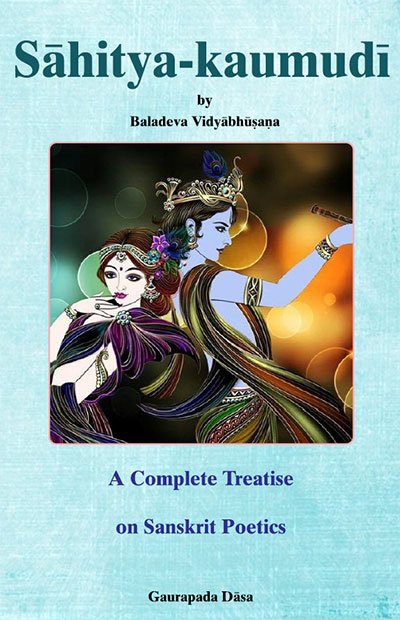Sahitya-kaumudi by Baladeva Vidyabhushana
by Gaurapada Dāsa | 2015 | 234,703 words
Baladeva Vidyabhusana’s Sahitya-kaumudi covers all aspects of poetical theory except the topic of dramaturgy. All the definitions of poetical concepts are taken from Mammata’s Kavya-prakasha, the most authoritative work on Sanskrit poetical rhetoric. Baladeva Vidyabhushana added the eleventh chapter, where he expounds additional ornaments from Visv...
Text 5.1
अथ गुणी-भूत-व्यङ्ग्य-भेदान् आह,
atha guṇī-bhūta-vyaṅgya-bhedān āha,
Now he mentions the varieties of second-rate poetry:
agūḍham aparasyāṅgaṃ vācya-siddhy-aṅgam asphuṭam |
sandigdha-tulya-prādhānye kākv-ākṣiptam asundaram ||5.45||
vyaṅgyam evaṃ guṇī-bhūta-vyaṅgyasyāṣṭau bhidāḥ smṛtāḥ ||5.46ab||
The eight kinds of second-rate implied sense are: (1) agūḍha (not subtle), (2) aparasya aṅga (a subsidiary aspect of another) (3) vācya-siddhi-aṅga (an aspect in the accomplishment of the literal sense of the sentence), (4) asphuṭa (unclear), (5) sandigdhaprādhānya (the doubt: is the implied sense or the literal sense predominant?), (6) tulya-prādhānya (the literal sense and the implied meaning are equally astonishing), (7) kāku-ākṣipta (implied by a modulation of the voice), and (8) asundara (not as beautiful as the literal sense).
Commentary:
The term guṇī-bhūta-vyaṅgya literally means “the implied sense has become secondary.” Thus second-rate poetry is characterized by an implied sense that is not more astonishing than the literal meaning of the text. Often, the implied sense that constitutes a literary ornament is second-rate and is classed in one of the first three categories or in the last category.
